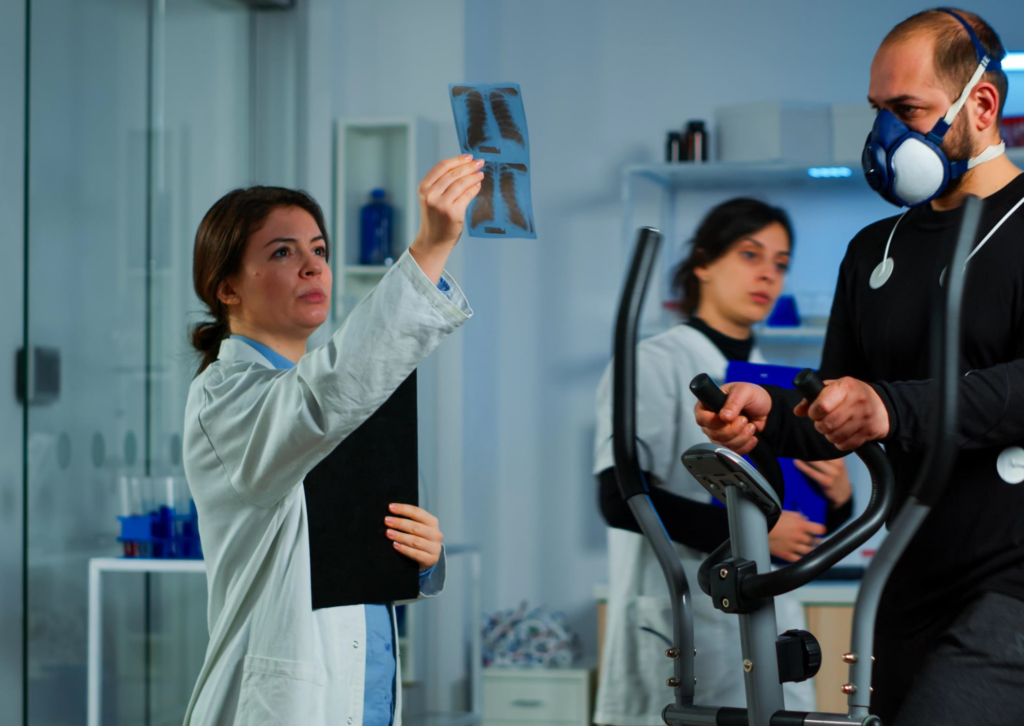1. Evidence-Based Approaches
These technologies are developed based on extensive research and data from sports science, which translates well to workplace injury prevention. They are tested in high-demand environments, ensuring robustness and effectiveness.
2. Real-Time Monitoring and Feedback
Technologies like wearable sensors and motion tracking provide real-time data on physical activities, helping workers maintain proper form and avoid injury. This immediate feedback is valuable in preventing repetitive strain injuries and other workplace accidents.
3. Ergonomic Enhancements
Equipment and tools designed for athletes often focus on ergonomics, ensuring that movements and postures are optimized to reduce strain. When applied in the workplace, these principles help reduce musculoskeletal injuries.
4. Training and Conditioning
Programs developed for athletes to enhance strength, flexibility, and overall fitness can be adapted for workers, helping them to be physically prepared for the demands of their jobs.
5. Personalization
Injury prevention technology often includes personalized assessments and interventions. This customization ensures that individual workers receive tailored solutions that address their specific risk factors.
6. Proactive Injury Prevention
Proactive Injury Prevention: Just as these technologies are used to prevent injuries before they occur in sports, they can be used to identify and mitigate potential risks in the workplace, promoting a proactive rather than reactive approach to injury prevention.
7. Comprehensive Data Analysis
The use of advanced analytics in sports technology helps in identifying patterns and trends that may lead to injuries. When applied to workplace safety, this can result in more targeted and effective prevention strategies.

Physically demanding jobs can be healthy with proper safety parameters. In fact, most blue-collar workers enjoy above-average cardiovascular health. However, these workers also have a much higher rate of musculoskeletal injury. The second leading cause of injuries resulting from several days away from work is excessive stress and body reaction, which accounts for 22% of all non-fatal injuries. Therefore, workers must find a balance between doing enough physical work for their cardiovascular health while avoiding overexertion and injury. This begs the question: Can we reduce harm and maintain the benefits of active work? In elite sports, athletes are well-optimized against injuries with health on and off the field. So, why are we lagging behind in preventing injury and promoting better health for everyday, active workers?
Traditional workplace injury prevention is less effective than sports injury prevention.
Unfortunately, research has shown that most workplace injury prevention programs are ineffective in reducing injury risks. Workplace injury prevention programs are not designed to engage and coach workers. This is because they consist of instruction-based instruction (classroom-style delivery) rather than behavior-based learning strategies and personal, data-driven coaching. Traditional workplace injury prevention solutions are also too general and often fail to address the unique injury risks associated with each job, different workplaces, and individual workers. The most effective injury prevention training requires workers to be aware of when they are moving in ways that increase their risk and learn from their movements so they can correct them. Many injury prevention programs also fail to personalize alerts and guide each worker to optimize their movement for their specific job. There are countless variables within each worker and work environment that are critical to risk identification but are often overlooked.

Accelerometer: Accelerator damage prevention technology Unlike most workplace injury prevention (IP) solutions, sports technology is highly personalized. Elite athletes use wearable technology, analyzing their movement and receiving alerts that reduce the risk of injury and improve individual performance. The high costs of elite-level athletes unable to perform due to injury have led to the development of injury prevention technology. Among the research and innovations carried out by elite sports is the wearable accelerometer. There is a high level of reliability and validity using accelerometers worn on the person to collect movement data over long periods. These data accurately represent measures of injury risk—including the athlete’s fatigue threshold, motion control, and muscle soreness. Bringing sports technology to the workplace When we bring advanced sports technologies into the workplace, we can personalize at scale, in real time, over time for each worker. Wearable technology increases the range and eliminates the risk of reliability-based errors when identifying damage hazards. In both sport and the workplace, it is impossible to assess injury risks for each individual over long periods using the traditional observation and opinion approach. Historically, in professional sports, a coach would spend time observing athletes with a physical therapist or physician. They manually assess a person’s movements to identify risks of injury. However, this manual method, involving one or more experts, is not only costly but also subjective in nature.
Video analysis for the 3D world Video analysis and motion capture are widely used for sports injury risk assessment and prevention, but there is a common fatal flaw. Single-camera video analysis is rarely used because of the risk of parallax error. Parallax error refers to when the observer’s eye (or camera) does not match the measuring instrument and what is being measured. This can happen when measurements are taken from only one 2D moving plane. This is very inaccurate when an athlete (or worker) is always moving in 3D. While the use of workplace video technology to assess injury risk has increased over the past few years, the only way to accurately measure the movements of athletes and workers to assess injury risk is through multi-camera video analysis or wearable technology. Sports injury prevention programs combine data from wearable technology with video as an effective training tool to demonstrate high- or low-load movements. This process can be transferred to the workplace. By using wearable devices and capturing motion data with video motion, better training and observation can be done for specific job tasks. This allows individual feedback to guide the worker’s movements.
Using sports injury prevention methods to prevent workplace injuries.
For any injury prevention program to be successful, it must address the needs of two primary stakeholders: the target group (athletes or workers) and the individuals delivering the program (sports medicine team or safety professionals). Implementing a sports-inspired injury prevention program in the workplace should engage workers and safety professionals in several key ways. For workers, a successful exercise-based injury prevention program should: Treat workers like industrial athletes. Many workers in physically demanding roles love to exercise, and most people know that professional athletes receive quality care. Promoting an injury prevention program to workers as an opportunity to use the same injury prevention technology as sports champions shows that their employer treats them like athletes and values their health and well-being.
Give positive feedback. Providing feedback to workers using language such as “dangers” or “dangers” associated with their work tasks has a negative effect, because no one wants to feel that they are performing dangerous or risky tasks. However, giving them feedback using the same data, technology, and (load) terminology used in elite athletes allows them to become aware of when they are moving in a way that puts a lot of load on their body without fear of injury. Engage workers in real time. The most effective way to reduce stress-related injuries for workers is to provide them with feedback at the most appropriate time—while they are performing their job duties.
Using wearable technology that provides alerts to alert workers when they are performing “high-load” movements helps them understand what movements they need to change to avoid injury.
Provide strategic and bite-sized training. Educational content should also be provided on time in appropriate amounts. Small training modules using video and images presented periodically throughout the year are much more effective than a one-hour classroom presentation.
For professional safety: Keep data collection simple. Safety professionals are often the busiest people in the workplace, so an injury prevention program must be easy to use and time efficient. A safety professional can use a simple process, place sensors on a worker while they perform their tasks and collect footage using their smartphone. Data from sensors and video are automatically combined into a simple platform to show which components of tasks can be modified or performed with different techniques to reduce the risk of injury. Make it easy to review data. Analyzing data from wearable technology can be very difficult. Teams of sports scientists are required to process and analyze data from wearable technology in professional sports. However, safety professionals do not have that luxury, so workplace injury prevention data must be presented in an easy-to-use format to enable them to see where the risks are and what they need to prioritize their time on.







